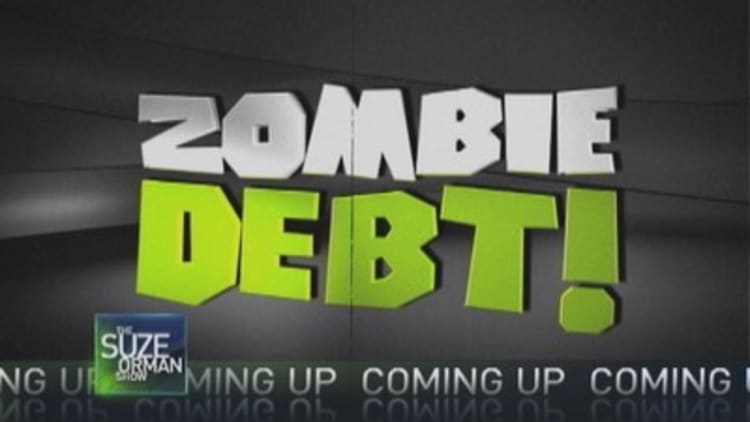
Bankruptcy rates spiked during the 2008 recession and many were pretty judgmental toward the millions who couldn't afford to pay their bills. But Suze Orman says bankruptcy is the better option over burying your head in the sand. "When somebody really doesn't have money to pay their bills then they should claim bankruptcy and face it right on and start all over again," says Orman.
Many people heeded this advice over the past five years. In 2008, bankruptcy filings jumped 32 percent to 1.1 million and in 2012 the filings jumped to 1.3 million. However, in June 2013, the U.S. courts reported filings closer to the early recession era at around 1.1 million.
Record-breaking filings have some at odds with Orman's advice. "Many gripe when I tell someone to claim bankruptcy," says Orman. "But what if you've got all this credit card debt, mortgage debt and car loans, and you just stop paying all these things because you just don't have the money?" asks Orman of her naysayers.
She points out that there's really not much difference and the alternative to filing may be far worse. "If creditors sue and win they have the legal authority to garnish wages or put liens on your home," says Orman.
She says it's better to take "the legal route that is claiming bankruptcy, to let your creditors know that you really can't afford to pay it."
The most commonly filed types of bankruptcy by an individual are Chapter 7 and Chapter 13. Here's what you need to know about both.
Bankruptcy options at a glance
Chapter 7 (Liquidation of nonexempt property)
—Sells the debtor's nonexempt assets (if any assets of worth are available).
—Allows the debtor to keep certain "exempt" property.
—Discharges debtors from personal liability for most debts and prevents the creditors from taking any collection actions against the debtor.
Chapter 13 (Individual debt adjustment)
—Acts like a consolidation loan.
—Allows a debtor to keep property and pay debts over time, usually three to five years.
—Debtor must still make all mortgage payments according to the Chapter 13 plan.
—Allows individuals to reschedule secured debts.
Click here for more on the basics of bankruptcy.
By CNBC's Sakina Spruell. Follow her on twitter @SakinaCNBC

See more of Suze Orman's advice on The Suze Orman Show Saturdays on CNBC at 9 p.m. ET.
We're looking for people who want to participate in the show and ask Suze for help. Be a guest on "The Suze Orman Show!"

